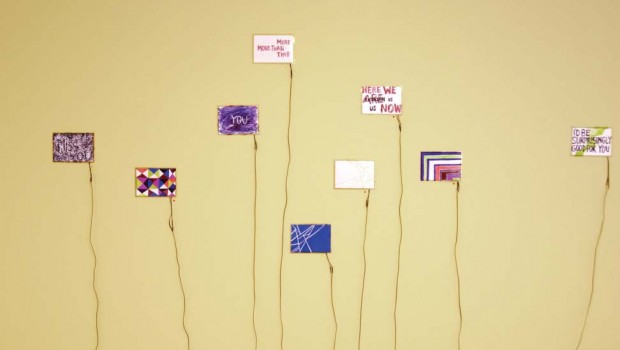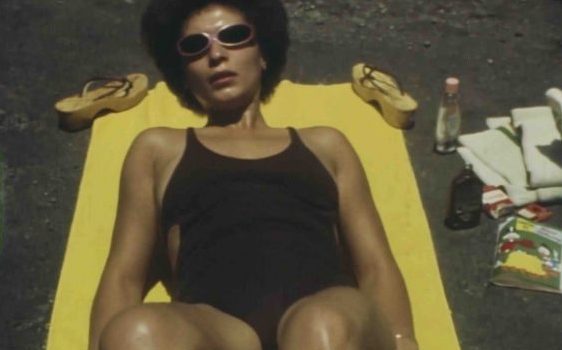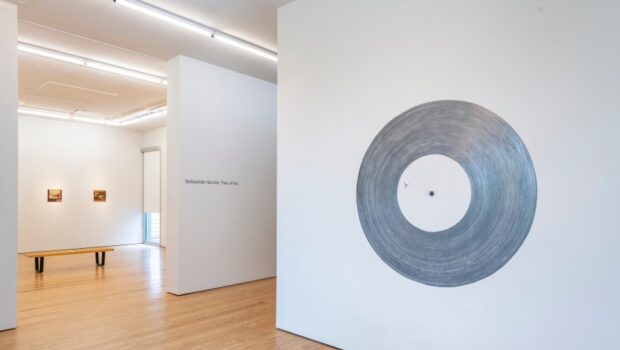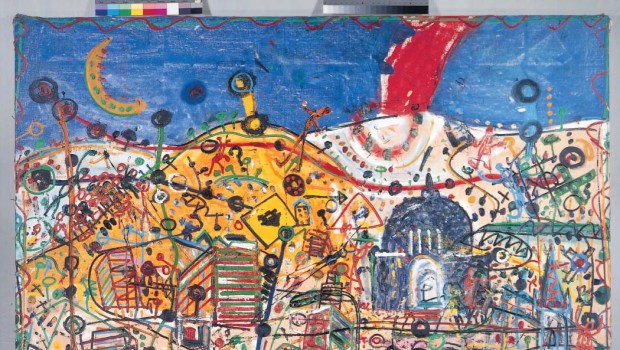Aldo Chaparro. “Pop is for Everyone”
Fernando Castro R.
PUTA: Aldo Chaparro’s LOVE of Robert Indiana
Download Complete PDF / Descargar
“déjame ser tu puta”
(let me be your whore)
The Sunstone, OCTAVIO PAZ
Probably many more artists than Aldo Chaparro have thought that Robert Indiana should have explored more four-letter words than just LOVE. In fact, my sister Mercedes once met Indiana at a dinner party in New York and suggested that he produce Amor. Indiana’s face lit up and in gratitude he gave her sculptural versions of LOVE and AMOR for her Pop Art collection.
The birth of LOVE was rather serendipitous. According to Wikipedia, it was designed in 1964, at the pinnacle of the Pop Art movement, for a Christmas card of the Museum of Modern Art. Prior to it, Indiana had explored three-letter words like EAT and DIE (1962). Once LOVE became an icon for a generation that believed in free love and sex, and in the concept itself as an antidote for the Vietnam and other wars, Indiana was wise to protect his single-four-letter-word message. As visual poetry, however, the word is dangerously overused. A poet would do better to explore Fate, Luck, Done, Fear, Coke, Read, Know, Deal, and/or even Crap. In a feat of masterly postmodernist appropriation, Aldo Chaparro has made the English SUCK and the Spanish PUTA. The irreverence and provocation of Chaparro’s works rekindles the long lost link of Pop Art to DADA (another four-letter word) while simultaneously projecting it onto a path that Indiana was not interested in walking: namely, explicit sex. Thus Jeff Koons and Robert Mapplethorpe may be better antecedents for SUCK and PUTA than LOVE. For Chaparro, however, explicit sex is textual not graphic; or, to better honor Greek roots, not visual.
Aldo Chaparro’s first Houston exhibit is titled More Than This. The phrase alludes to a song by the English rock group Roxy Music. It was shown at Sonja Roesch Gallery –whose preference for “reductive and concept-based art” is stated at its website. Most prominent in the exhibit are the wall-mounted steel structures (Green, Purple, Magenta, and Steel, 2010) that have the look of crumpled paper –a type of discarded object familiar to poets and other writers. Their colorful and shiny finishes are reminiscent of Jeff Koon’s sculptures such as Sacred Heart (1994-2007). In Chaparro’s exhibit there is also Light Drawings (2010) that include text, and the installation Pink Spider Web (2010), made of luminescent wire that splits the main exhibit room in half. Only a small version (2”x4”x3”) of Chaparro’s PUTA was part of More Than This.
Once LOVE became an icon for a generation that believed in free love and sex, and in the concept itself as an antidote for the Vietnam and other wars, Indiana was wise to protect his single-four-letter-word message.
“Pop is for everyone,” Andy Warhol uttered democratically in 1967. This statement is akin to some of Chaparro’s remarks in a recent interview with Rose Mary Salum. Chaparro commented, “…in my textual works, I attempt to recreate the reaction which the lyrics of a song we recognize (I never use song lyrics that are not very popular) evoke in us. Music takes us to a time, situation or moment in a way only it has the power to do.” However, in addition to evocating a personal memory, the de-contextualized and re-contextualized lyrics rebound as art commentary. According to Chaparro, “…they appear as reflections about the process of the works themselves.” Chaparro’s texts have the popular appeal of Roy Lichtenstein’s comic book captions (such as, Vicki, I-I thought I heard your voice) and the art-referential pithiness of Joseph Kosuth’s works (Manifestation, not description from No #2 (Not on color/ Blue), 1991). In fact, it is mainly to Kosuth that the title piece More Than This in Chaparro’s exhibit pays homage.
 Why was PUTA, one of the most celebrated works by Chaparro only minimally represented in More Than This? It would be otiose and irrelevant to speculate why. So let’s ask instead what the music for PUTA could be? We will begin by establishing that Minimalist art has not been a very cozy bed for erotic art. Eroticism is one of the great themes of universal art and yet it is absent in many paths modern art took. We have been lured into the euphemism of “sensuousness” in order to find a surrogate for sex in Minimalist Art. For instance, Chaparro’s Purple and Green sculptures are sensuous but not erotic. Whoever has tried both “erotic” and “sensuous,” knows about the latter that “it ain’t necessarily so.” This last sentence leads us to a song from the opera Porgy and Bess. Is that the music for PUTA? One of its lyrics reads, “Live clean, don’ t have no fault” –a precious and most permissive double negative. But the answer cannot be YES.
Why was PUTA, one of the most celebrated works by Chaparro only minimally represented in More Than This? It would be otiose and irrelevant to speculate why. So let’s ask instead what the music for PUTA could be? We will begin by establishing that Minimalist art has not been a very cozy bed for erotic art. Eroticism is one of the great themes of universal art and yet it is absent in many paths modern art took. We have been lured into the euphemism of “sensuousness” in order to find a surrogate for sex in Minimalist Art. For instance, Chaparro’s Purple and Green sculptures are sensuous but not erotic. Whoever has tried both “erotic” and “sensuous,” knows about the latter that “it ain’t necessarily so.” This last sentence leads us to a song from the opera Porgy and Bess. Is that the music for PUTA? One of its lyrics reads, “Live clean, don’ t have no fault” –a precious and most permissive double negative. But the answer cannot be YES.
Perhaps PUTA is not a work that needs to be connected musically to the memory of a place or time in which we had sex with a prostitute. After all, paid sex may not be the most satisfying experience for either of the partners. Some acts deserve remembering, others are better off forgotten. Although in some literary works prostitution has been glorified for the consumer, it is seldom anything but glorious for the seller. Chaparro comes from a society (Peru) that considers prostitution a “necessary evil” and thus, regulates brothels probably more than it does soccer. Peruvian literature abounds with brothels: from Mario Vargas Llosa’s Pantaleón y las visitadoras, to Alfredo Bryce Echenique’s Un mundo para Julius and Jaime Bayly’s No se lo digas a nadie. However, without in any way romanticizing the abominable life of prostitutes –which is not exactly that in Klute or Belle du jour– Chaparro’s PUTA, may be given a poetic interpretation arising from Octavio Paz’s Sunstone, perhaps the single most important poem written in Spanish in the 20th Century. It is the music of the planet Venus that resonates in PUTA.
Sunstone is comprised of 584 verses, the number of the days the planet Venus takes to complete one orbit. Verse 374 –“let me be your whore”–introduces the story of an act of love that is paid for dearly. It is the story of Eloisa and Abelard in the 1717 narrative poem by Alexander Pope. In these verses by Pope, one lover urges the other to abstain from writing: “Ah, come not, write not, think not once of me, / Nor share one pang of all I felt for thee.” In Pope´s poem, the brutal castration of the philosopher Abelard is perpetrated by the family of Heloise; an irreversible and horrible act that is best forgotten. Consequently, it is forgetfulness rather than memory that consoles both lovers: “The world forgetting, by the world forgot. / Eternal sunshine of the spotless mind!”
LOVE and PUTA inhabit an uncertain ground between cruelty and kindness. But it is the Paz poem, not Pope’s that Chaparro’s PUTA brought me back to because there is in the erotic experience a place and a moment where one can say or hear, “déjame ser tu puta.” Sunstone is the poem where LOVE and PUTA meet (or mate).
• Aldo Chaparro´s interview: www.rosemarysalum. blogspot.com
Posted: April 23, 2012 at 6:43 pm










